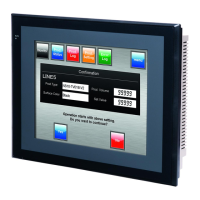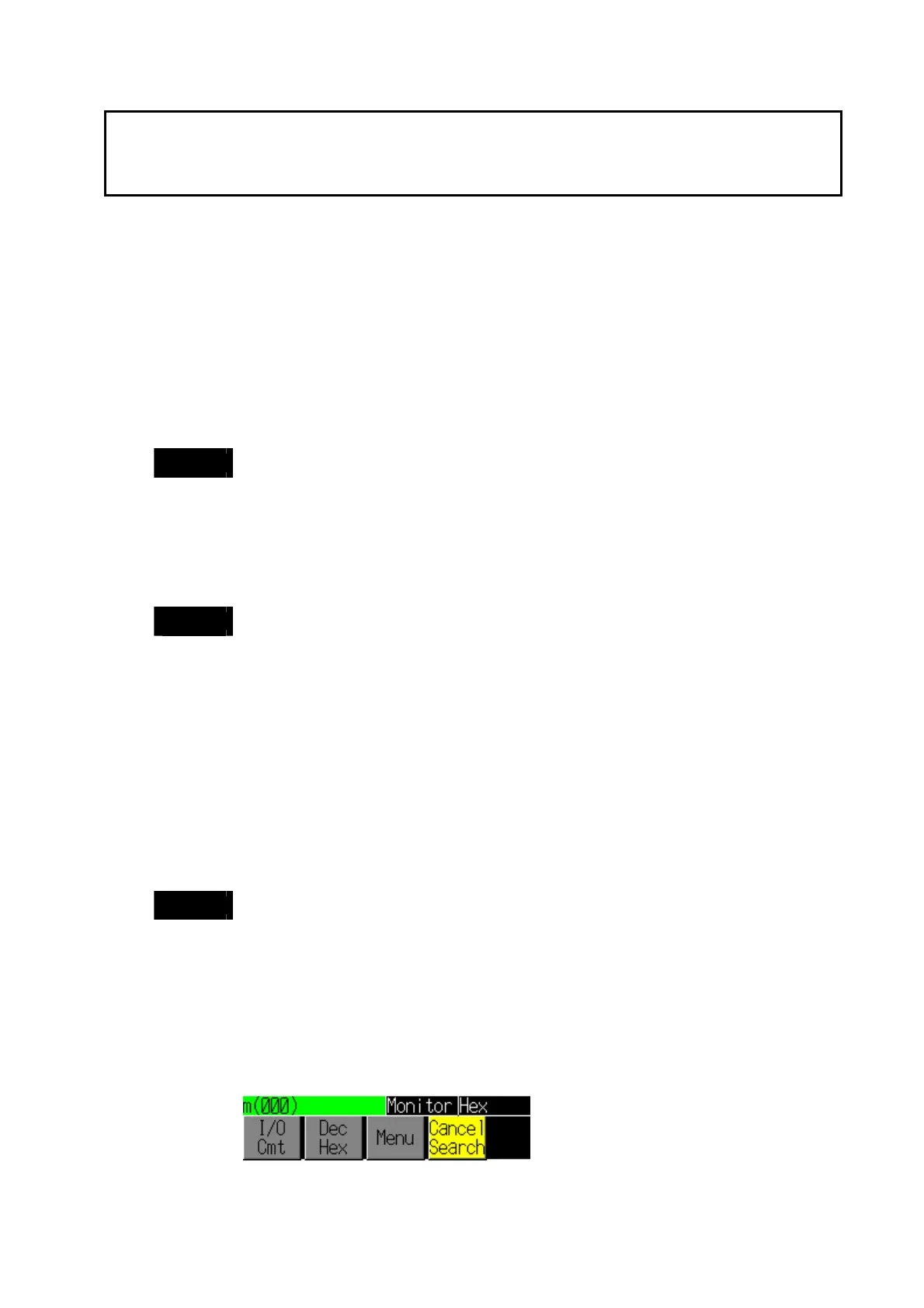3-3 Displaying the Desired Program Section
51
3-3 Displaying the Desired Program
Section
A search must be performed to display the desired program section. Step number
(program address), instructions, and addresses can be searched. Furthermore, an
output instruction can be searched for from an input bit, and an input bit can be searched
from an output instruction, the previous program section or the next program section can
be displayed, or the next occurrence (cursor position address) can be searched for, and it
is possible to return to a program section that was previously found.
For NS-series PT system version 8.0 or higher, by starting the Ladder Monitor from the
Alarm/Event Summary and History on a user screen, it is also possible to search for an
output address set for an alarm/event.
Note
The processing from a search until the display of the program section may take time.
The Ladder Monitor sends a search command to the PLC and monitors the
communications response time. If the response time exceeds the set time, a timeout
error message will be displayed. If that occurs, increase the timeout monitor time in the
Search Timeout Watch Time Setting. (For details on the Search Timeout Watch Time
Setting, refer to 3-3-13 Search-related Settings.)
Note
In the search timeout watch time setting, specify the timeout monitor time for
searches. For operations other than searches, timeout monitoring is executed
according to the timeout watch time and the number of communications retries set
under Comm. Setting in the PT System Menu.
• During a Search
Timeout watch time = Search timeout watch time set by Ladder Monitor
Number of communications retries = Number of retries set in the PT
• When a Search Is Not Being Executed
Timeout watch time = Timeout watch time set in PT
Number of communications retries = Number of retries set in PT
Note
Searching can be cancelled by pressing the Cancel Search Button at any time during
the following searches.
• Address searches
• Output instruction searches
• Output instruction searches from input bits
• Input bit searches from output instructions
• “Next” searches
• Jumping to addresses creating alarm from an NS-series PT user screen

